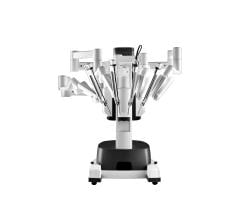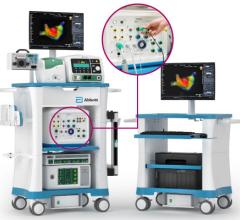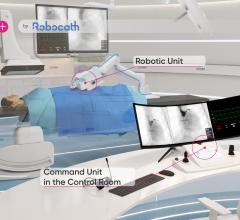April 20, 2007 — Scientists at Carnegie Mellon University Robotics Institute in Pittsburgh, PA, have created a robotic device that can be inserted onto a heart using minimally invasive surgery to deliver medical treatment. Resembling a robotic caterpillar, the 20-millimeter-long HeartLander can crawl across the surface of a beating heart, delivering drugs or attaching medical devices.
HeartLander, developed by Cameron Riviere and colleagues, has two suckers for feet, each pierced with 20 holes connected to a vacuum line, which holds it onto the outside of the heart. By moving its body segments it can crawl across the heart at up to seven inches per minute. Surgeons keep track of the device using X-ray video or a magnetic tracker, controlling the movements via a joystick.
HeartLander can reach all parts of the heart's surface, Riviere said. And because it's stationary relative to the heart's surface, there is no need to interfere with the organ's movement.
The researchers are now working on adding a radio-frequency probe to treat arrhythmias by selectively killing malfunctioning heart tissue. They also plan to add a camera.
The caterpillar device is inserted below the ribcage by keyhole surgery and is attached to the heart via a vacuum line to the suckers.
Riviere says the next stage will test the device using a sheep's heart; he hopes the HeartLander will be available for surgical use within three to four years.
The research is described in New Scientist magazine.

 June 11, 2024
June 11, 2024 








